The growing season for Japanese knotweed can vary considerably according to the UK weather. Whilst, typically you could expect to see new knotweed shoots in spring, in mild conditions, Japanese knotweed early growth can emerge prior to this. Early Japanese knotweed shoots can be tricky to identify, especially if they have surfaced away from an existing knotweed crown. And, there can be some confusion, early in the season or the life cycle of Japanese knotweed, with plant species that can be mistaken for young Japanese knotweed plants.
Japanese knotweed life cycle
Japanese knotweed is a perennial plant that grows new stems and leaves every year, starting in the spring. The plant matures and flowers over the summer then, moving into autumn, knotweed leaves turn yellow/brown and drop, followed by the stems darkening and drying out.
The whole purpose of this activity is to get food into the bit of the plant we can’t see, the rhizome. Japanese knotweed rhizome is actually stem growth that takes place below the ground, from which new buds and shoots appear. These turn into new stems, while small roots form along the undersides of the rhizome and seek out water.
The rhizome is the part of the plant that knotweed specialists are most concerned with. Tiny fragments of rhizome are perfectly capable of creating brand new knotweed plants where they land. And, even if it appears that knotweed has reached the end of its life cycle, knotweed rhizome can remain dormant under the ground for over a decade.
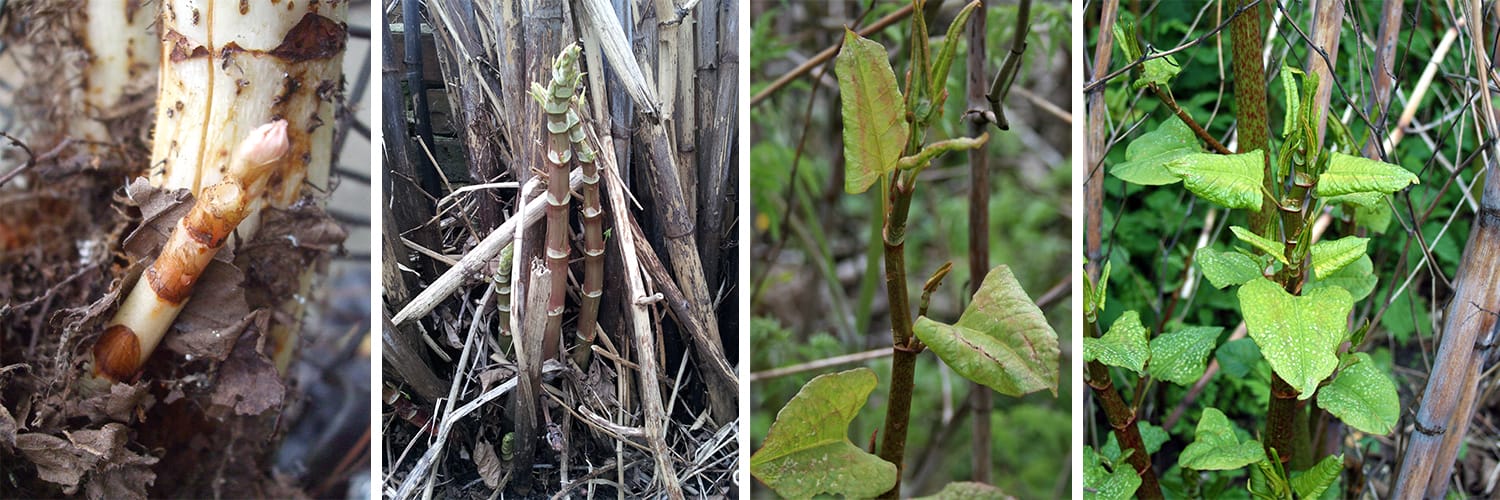
Early season Japanese knotweed shoots at various stages of development
From one season to the next
It’s from these rhizomes that Japanese knotweed is able to produce new knotweed shoots each year, using the nutrients that it has created and stored in the previous growth season. Happy, healthy knotweed can produce many shoots. These will go on to grow rapidly into stems that may reach heights three metres or more by mid-summer.
By the end of autumn knotweed will start to die back. Until, by winter the only evidence of the presence of the plant will be the winter canes of Japanese knotweed and the crowns. However, the plant is merely dormant for winter, and will remerge when the climate is favourable.
What do early Japanese knotweed shoots look like?
The visible growth cycle of Japanese knotweed starts with the appearance of small pink or red knotweed buds. They are rounded in shape, sometimes with a small tip from where the Japanese knotweed shoot will later emerge. The buds emanate from existing knotweed crowns, or the nodes of Japanese knotweed rhizomes.
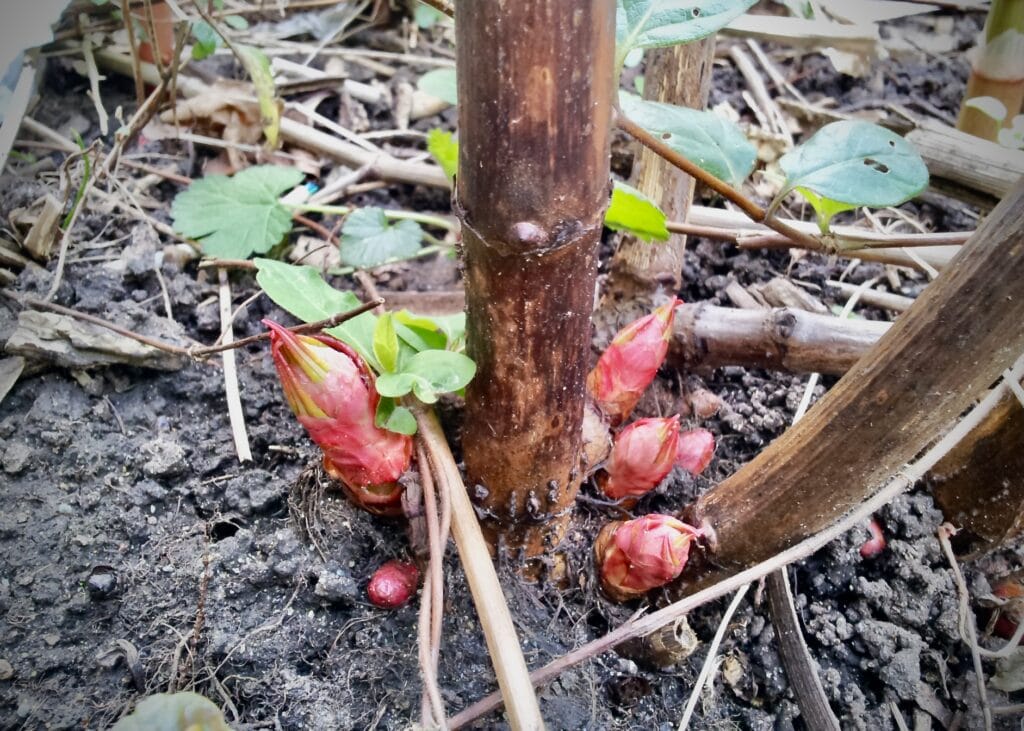
Crown of Japanese knotweed with buds emerging early in the season
When touched, Japanese knotweed buds have a firmness to them and frequently appear in clumps, emerging from the previous year’s rhizome growth. Often this will be over 2 metres from the original plant, and frequently in occurring patches around the plant, illustrating the rhizomes spreading in different directions. It’s from these buds that, in the spring or when conditions are favourable, new Japanese knotweed shoots will appear and start rapidly growing.
Early Japanese knotweed shoots
After progressing from the bud phase, early season Japanese knotweed shoots emerge tapered, resembling bamboo. A deep red or purple colour, similar to that of asparagus spears, with rolled leaves at the tip.
The young Japanese knotweed plants start to unfurl their leaves whilst still quite small, at a height of 10-30cm. Additional leaves will then start to appear from the nodes of the young knotweed plants, as the main stem thickens in preparation for more stem and leaf growth.
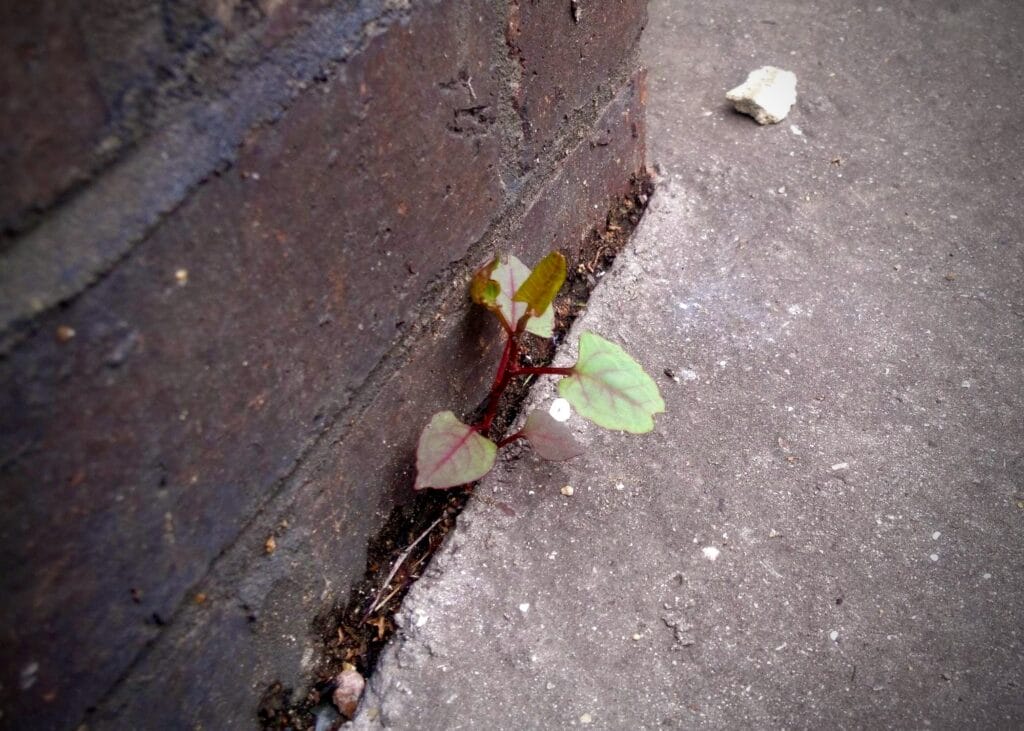
Young Japanese knotweed growing beside building foundations
Initially, the young knotweed leaves will appear red or green, with dark red or purplish veins. As the Japanese knotweed plant matures zigzag stems will form and the knotweed will turn its distinctive green colour.
How to identify Japanese knotweed in spring
During the spring months, the knotweed buds that have emerged from either the crown or rhizomes will transition to young knotweed plants. In early spring, Japanese knotweed shoots can look like asparagus spears with reddish/purple speckling.
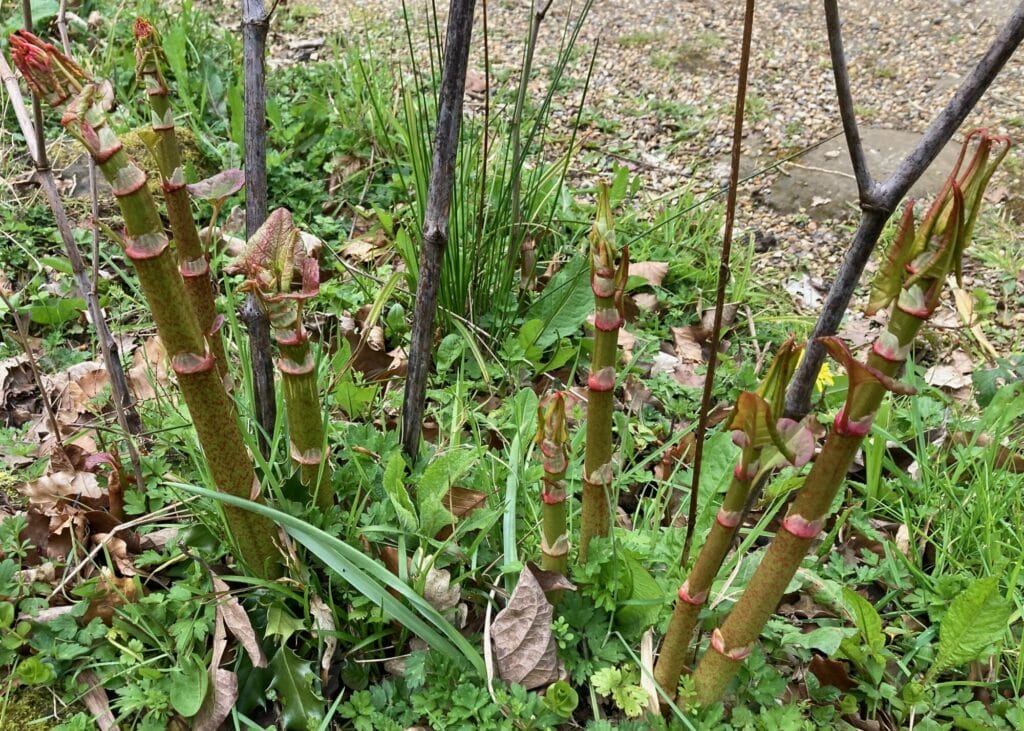
Early Japanese knotweed shoots with an asparagus-like appearance
As the shoots grow, and healthy knotweed grows very quickly, spade-shaped leaves begin to unfurl from the stems. Often beginning their life with red-tinted veins, then turning bright green like the rest of the leaf as growth continues. The new shoots can be a few millimetres to a couple of centimetres across, depending on the strength of the plant and how well-established it is.
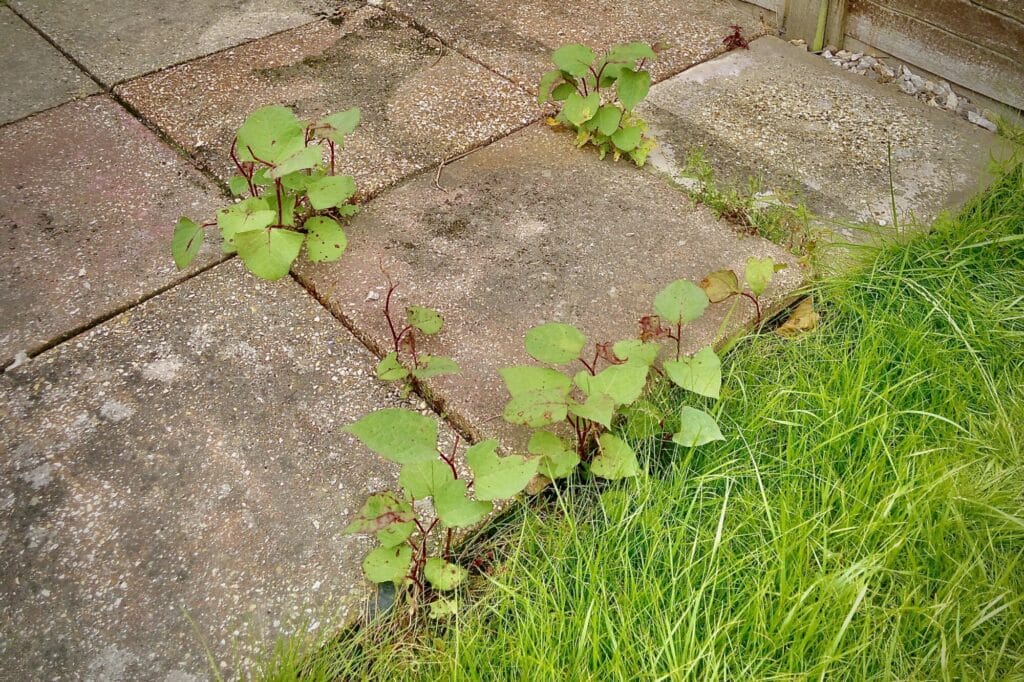
Young Japanese knotweed plants growing between garden paving stones
It’s worth noting that there are plants that look like Japanese knotweed, and in the early stages of growth can appear like young Japanese knotweed. Don’t panic and get out the old bottle of herbicide that’s been hanging around in the shed. If the plant in question is Japanese knotweed, treating the new stems with a herbicide will have little or no effect on the plant as a whole. The most likely outcome is that the visible stems will be damaged, and if professional treatment is needed, this could negatively impact the treatment programme. If the plant you attack isn’t Japanese knotweed, you’ll probably have killed something that’s not only completely innocuous but possibly a beautiful addition to your borders.
Can you tackle young Japanese knotweed yourself?
For treatment that has lasting results, it’s always best to bring in an experienced professional contractor. There are long-term benefits to getting the job done properly. Plus, you’ll have the management plan and documentation should you need to sell your property in the future.
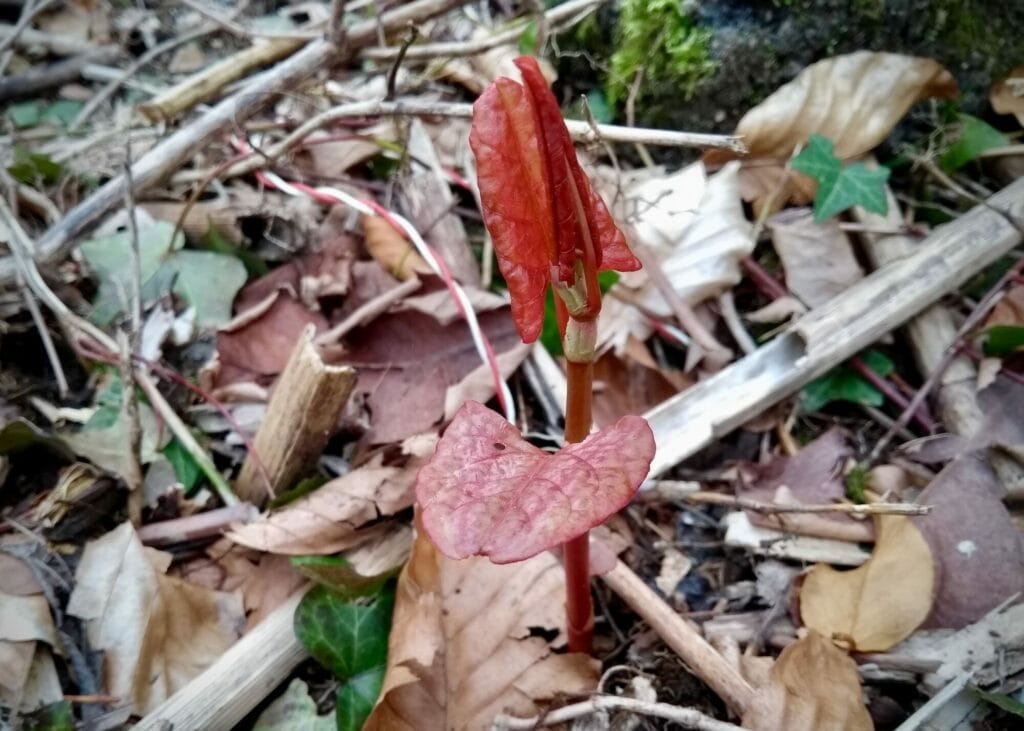
Young knotweed stem with pinkish appearance
PBA Solutions undertakes site surveys to determine if Japanese knotweed is present. Early Japanese knotweed buds, and spring knotweed growth, can be more challenging for homeowners to identify. However, our experienced surveyors will be able to pinpoint and document any findings in a report. You can book a Japanese knotweed survey here. A Japanese knotweed survey will provide formal identification, an accurate record of where the knotweed is located and the most appropriate methodology for control or removal.
If you are concerned that you have discovered the early emergence of Japanese knotweed, call and talk to a member of our team on 0203 174 2187 or 01202 816134.
All pictures © 2023 PBA Solutions

